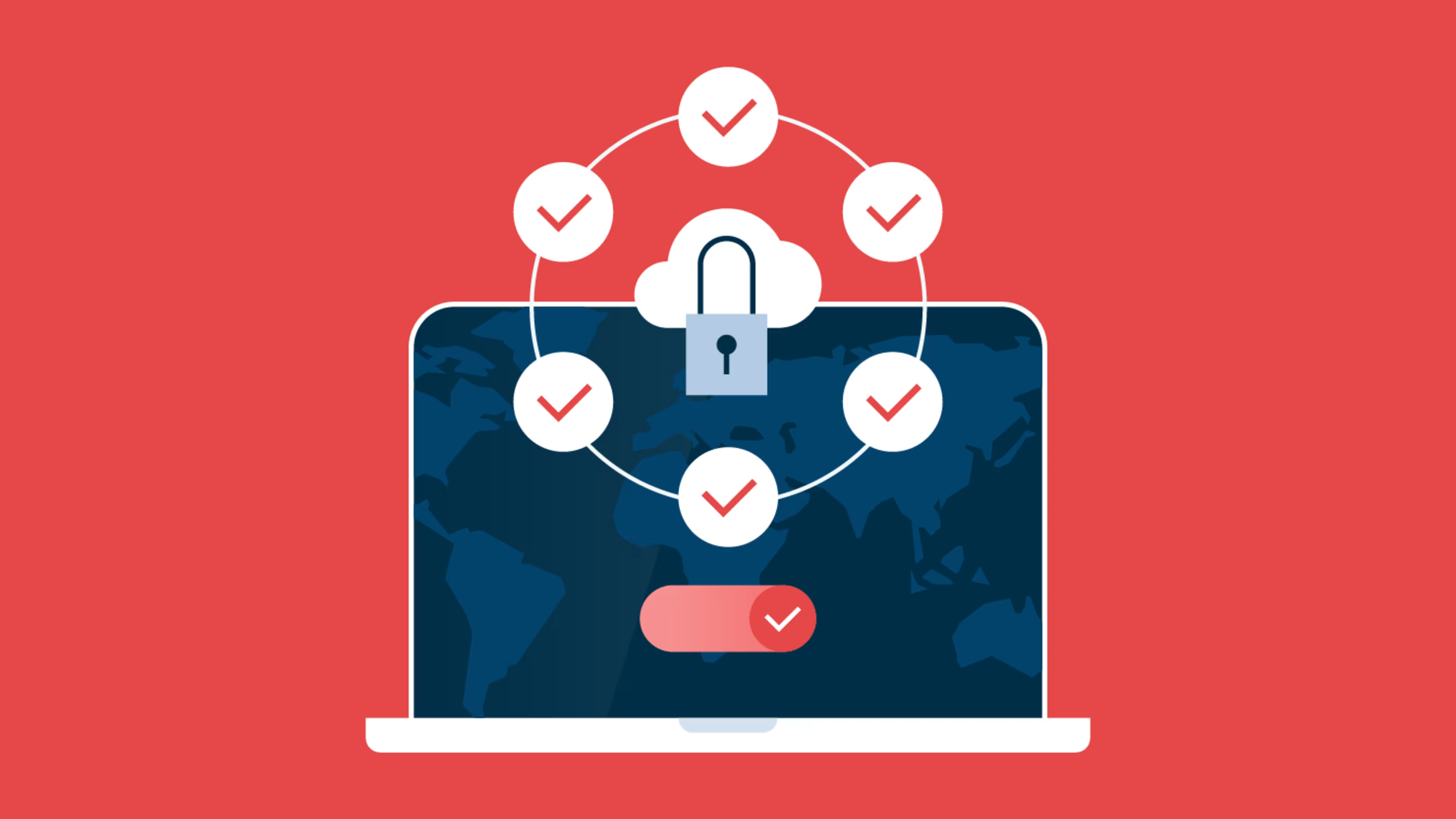IT infrastructure components ensure easy communication and secure data sharing.
Information technology (IT) infrastructure is critical to maintaining and improving your business's overall employee performance and productivity.
We discuss the role and importance of IT infrastructure components and how they help build and maintain robust IT infrastructure that ensures smooth communication, fast exchange of information, and secure data sharing within your business.
Why is IT infrastructure important?
A strong network of IT infrastructure components, such as hardware, software, and data storage, makes your business operations run better and faster. A weak infrastructure, on the other hand, slows down work processes or leads to inefficiency.
A network that fails to include critical components, for example, can cause data silos and delays that could lengthen time-to-market for multiple types of products and services. Hardware reaching end-of-life (EOL) might no longer be compatible with the latest software. Companies that invest in advanced software without considering the limitations of their hardware could be wasting business funds.
IT infrastructure management services consider all these aspects and components, leading to stronger infrastructure and more reliable systems.
What are the essential IT infrastructure components?
There may be dozens of individual IT infrastructure types across a single organization. These are five of the top categories and some of the individual components you may find in each area.
1. Hardware
Hardware refers to the physical components that form the core of IT infrastructure. Some examples include computers, laptops, printers, and storage devices.
Hardware may allow users to input data into the systems and store and share it. It can also create output, facilitate interfaces, and connect disparate system components. Any physical part of a system, from motherboards to routers, is classed as hardware.
The speed and adaptability of your infrastructure may depend on how advanced your hardware is. Regular assessment and hardware upgrades can ensure IT system infrastructure stays in line with current technological advancements.
/ Key benefit
Keeping abreast of advancements in hardware helps growing businesses stay ahead of competitors. Responsive hardware increases productivity, helps DevOps teams get products to market faster, and increases team collaboration.
Things to remember
Hardware components can be expensive and may take up a significant portion of the IT budget. Here are a few factors to consider while buying hardware:
Features: Each hardware component has a unique feature, such as storage space, size, processor, or connectivity, so assess your needs before investing in hardware.
Speed and performance: Most hardware devices have a processor responsible for speed and performance. A higher processing power usually provides a better capacity to handle critical tasks and extensive workloads.
Mobility: Consider whether a particular piece of hardware needs to be fixed or mobile. Some may use cloud services to provide virtual access to systems via multiple internet-connected devices across a company.
2. Software
Software is a set of instructions—in the form of code—that enables hardware devices to function. Hardware and software cannot work without each other. For example, a computer cannot work without an operating system. Likewise, a web application is useless without a display screen and input device to allow users to interact with it.
In simple terms, software directs hardware to do its job. It can also automate tasks that are either time-consuming or prone to human error, such as data duplication. Examples of popular business software include customer relationship management systems (CRMs), enterprise resource planning tools (ERPs), and content management systems (CMSs).
/ Key benefit
Investing in the right software helps businesses ensure their hardware works correctly, boosting the benefits given above. Firms can use software to collate customer information, complaints, and other forms of contact to increase customer satisfaction scores and brand reputation.
Things to remember
Software is crucial to your business’s IT infrastructure. Here are some things to consider while buying software:
Features: Some software suites cover multiple areas of business concern, while others are team-specific, such as applicant management systems and other human resources software.
Cost: Always check if the software is available via subscription or single purchase and which suits your business budget better.
Resources: If you need to install the software on-site, check that your machines/servers have the necessary requirements in terms of space and processing power. For cloud-based applications, ensure the provider offers online security that aligns with your organization’s protocols.
Check out these resources for more guidance on buying software:
3. Network
A network is the connection between multiple pieces of hardware and software. The hardware that helps make these connections includes:
Routers
Switches
Cables
These are operated and made secure utilizing software, including:
Operating systems
Other online security components
Networks transform disparate IT infrastructure components into a single entity comprised of multiple parts that can all communicate.
/ Key benefit
A reliable and secure network helps reduce the risk of cybercrime while maintaining meaningful connections with colleagues, clients, and stakeholders. Networks reduce data silos and increase collaboration.
Things to remember
Security and user experiences can suffer without adequate network infrastructure. Here are some ways to build strong and secure network infrastructure:
Plan the placement of network components to facilitate uninterrupted information flow.
Use firewalls and other security measures to prevent unauthorized network access.
Use network management and monitoring tools to ensure all network components work properly.
4. Data center
A data center is a physical or virtual space to store and manage business information and applications. It provides employees with secure, uninterrupted access to information and applications.
Data center infrastructure comprises servers, storage devices, computer applications, security systems, and routers. These components ensure smooth internal and external communication and secure storage and management of your business’s information. Data centers are associated with high energy consumption, and the growing demand for access to instant data could impact the rate at which the power grid receives modernization.[1][2]
/ Key benefit
Data centers provide a backup of all business data in case of loss or cyberattack. This helps businesses avoid interruptions in production or service. The use of off-site, third-party data centers also promotes scalability.
Things to remember
Data is critical for informed decision-making. Its dependability, security, and access should be your top priorities. Here are some ways to keep your data center secure, adaptable, and manageable:
Have flexible data center infrastructure that easily adapts to technological changes and new component additions.
Ensure self-managed data centers meet state and national data security regulations and laws.[3]
Use data center management tools to boost your data centers' efficiency, reliability, and security.
5. Server
A server is a piece of software or hardware that responds to instructions from a client. In many IT infrastructure examples, the server is the core of an organization’s network, hosting the primary software and components that, along with operating systems, allow business systems to function.
Servers may be physical or virtual and must always be available for network-based traffic to flow uninterrupted. Businesses may have multiple servers that provide different functions. They may also use on-site or off-premises servers, with statistics indicating a 50/50 split between one and the other.[4]
/ Key benefit
Servers facilitate information sharing and the connectivity of multiple devices. Without a server, online communication becomes challenging, and data silos may occur.
Things to remember
On-site server rooms take up a lot of space and may need the hire of full-time professionals for their upkeep. Off-site or virtual servers address these challenges, but providers may not match your security needs. When choosing a server provider, you should:
Look at subscription rates and consider the value of short-term versus long-term subscriptions.
Ask providers what security guarantees they provide and what backup and recovery mitigations are in place.
Consider server management software for on-site servers.
How to build a scalable and secure IT infrastructure
You probably already have multiple IT infrastructure types and components within your business. However, what works for your company now might not work once you’ve expanded beyond a certain size. Assessing your current business requirements versus potential future needs can help you invest in software and hardware that allows you to scale up effortlessly.
IT infrastructure virtualization
One way to ensure scalability is by embracing virtualization. This is where software replaces hardware, for example, virtual servers or cloud-based data centers. This removes the need to increase the physical space required for bulky, traditional data storage. To be effective, virtual infrastructure components must be as secure as physical alternatives. Quiz your providers on how they secure their systems and what guarantees they offer.
IT infrastructure automation
Many aspects of IT infrastructure, including cybersecurity, benefit from automation. Automating tasks frees up personnel to focus on other responsibilities while ensuring accuracy. Watch the video for more information on IT infrastructure automation.
IT infrastructure examples
To get a sense of how effective IT infrastructure components come together, you can take a look at successful tech businesses. One media streaming giant has the following components in its IT system infrastructure:
A backend powered by application services, messaging services, and various databases, including MySQL
A frontend user interface built using JavaScript services
Various software services that allow users to access streaming via mobile devices
APIs that help create a network of connections between components
Cloud-based data storage solutions
Data integration solutions and tools for analyzing and reporting on big data[5]
You’ll see that there are examples of hardware, software, and network components in the above list. Large enterprises like this will also usually have on-site data centers and servers, while smaller and midsize organizations may opt for off-site or cloud-based solutions.
Careful selection and implementation of components leads to strong IT infrastructure
IT infrastructure components are crucial in establishing stable and efficient business systems and networks. Everything must be thoroughly and carefully implemented, from selecting hardware to identifying supporting software, connectivity, and integration solutions. Taking time to consider the right solutions keeps your business needs and technology resources in sync, leading to effective IT infrastructure management.
Explore more Capterra resources on IT infrastructure:

